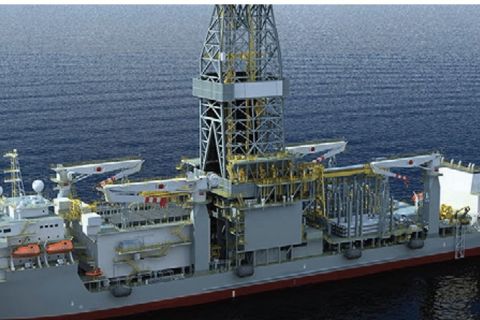My first memory of India was shaped by the chaotic charm of Chennai. Fresh off a too-long flight from Houston, I stepped out of the airport and into a predawn cacophony of squawking livestock, blaring taxis and honking tuk-tuks.
Through it all, the soothing call of the Adhan Salat-Al Fajr (the morning call to worship) calmed my nerves just long enough for an elderly taxi driver named “Sam, just call me Sam, ma’am” to whisk me away to my hotel.
So when I first heard the news surrounding the city’s water crisis, I thought of Sam.
Like the water shortage that struck Cape Town, South Africa, last year, the water supply in Chennai has dwindled to nearly nonexistent. In July, after months of rationing and more extreme measures, train tankers carrying millions of liters of freshwater rolled into the city that more than 9.1 million people call home. It was the first of many deliveries until the monsoon season sets in.
My thoughts also turned to Midland, Texas, where having spent a fair piece of my youth roasting in the summer sun, I came to have a greater appreciation for water conservation. This knowledge sits in stark contrast to the probable crisis of the Permian Basin having too much water due to oil and gas activity.
A Raymond James & Associates outlook noted that the total U.S. produced oilfield water would reach about 55 MMbbl/d by 2025 and about 60 MMbbl/d by 2030, with the Permian accounting for 32 MMbbl/d and 38 MMbbl/d in the respective years.
“As the Permian Basin shifts further into manufacturing mode, the water growth we project will create the need for nearly 1,000 additional saltwater disposal wells [SWDs] by 2030,” the analysts wrote. “By 2030, we predict there will be a total need for about 1,750 saltwater disposal wells. This incremental demand for SWDs we estimate represents a $7 billion to $9 billion investment in the Permian Basin alone.” I get it. The best place for produced water is back into the formation from whence it came. But could Cape Town and Chennai be the canaries in a mine that we’re not hearing?
As an industry, we have solved numerous complex science and engineering puzzles. While continued advances in desalination and reverse osmosis will certainly help, more is needed.
In addition to drilling new SWD wells, let’s continue investing in current water treatment technologies and developing new treatment approaches capable of refining dirty water into something closer to fresh.
Are there cost challenges? Sure. But in 2010 recycling produced water just enough for use in fracking operations was deemed too costly, and now everyone is using it or at least considering it. Maybe right now it’s too expensive to get produced water iced tea-ready, but in five years or even 10, who knows?
Maybe it’s a worthy goal.
Recommended Reading
Petrobras to Step Up Exploration with $7.5B in Capex, CEO Says
2024-03-26 - Petrobras CEO Jean Paul Prates said the company is considering exploration opportunities from the Equatorial margin of South America to West Africa.
E&P Highlights: April 15, 2024
2024-04-15 - Here’s a roundup of the latest E&P headlines, including an ultra-deepwater discovery and new contract awards.
Shell Brings Deepwater Rydberg Subsea Tieback Onstream
2024-02-23 - The two-well Gulf of Mexico development will send 16,000 boe/d at peak rates to the Appomattox production semisubmersible.
Deepwater Roundup 2024: Americas
2024-04-23 - The final part of Hart Energy E&P’s Deepwater Roundup focuses on projects coming online in the Americas from 2023 until the end of the decade.
Valaris Updates Fleet Status
2024-02-19 - The backlog of these contracts and extensions is valued at $1.2 billion.





